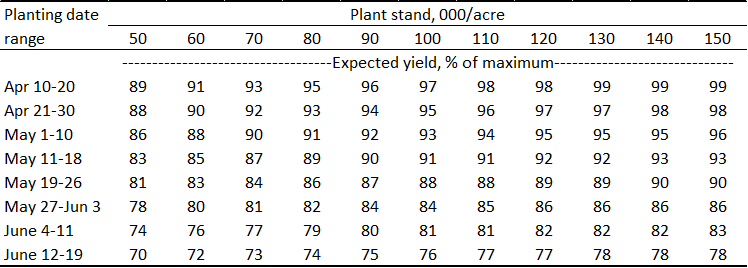Many farmers in the state of Illinois planted this year’s soybean crop earlier than ever before. Near-perfect soil conditions in early April, coupled with less than favorable memories of 2019, led to widespread planting across the state in the first half of the month. Widespread understanding of the potential yield benefits of planting early also encouraged growers who in some cases finished their soybean planting before even starting corn.
Although there have been some field regions requiring replant, mainly because of this May’s late frost or saturated soils, most growers I have spoken with are happy with their decision to push the envelope with early planting. The resilience of soybeans was evident when the vast majority of fields survived the temperatures of 28°F or even lower on May 9. Persistent precipitation in May limited available planting days, and many growers would be facing June planting were it not for the April window.
Growers who have heard stories of high yields from early planting may be expecting record harvests this season with so much of the crop in the ground so early. However, unfavorable growing conditions have delayed soybean plant development.
The end of April and most of the month of May have been cool and wet. Growing Degree Day accumulation between April 15 and May 28 in 2020 was around 15% below the 11-year average. Rainfall accumulation for April and May in a large swath of the state has been higher than even in 2019. These conditions have combined to slow crop development to the point that it is significantly behind where we would expect based on planting date.
I would recommend adding three weeks to the actual planting date to determine yield potential for your fields. So, we could reasonably expect a 2020 planting date of April 15 to perform more like a May 6 planting in a “normal” year. The following table from the University of Illinois provides expected yield levels based on plant stand and planting date. Based on this data, early planting yields more than late planting, even if stands are not as high as we would like.

Table 1. Soybean yields (percent of maximum) for different combinations of planting date and established population. Source: E. Nafziger, University of Illinois, 2020.
Even though there may be less yield bump from early planting this year, we also should not expect the yield penalty that we would have gotten from planting late; that is to say, many growers made the correct planting decisions. In almost every weather scenario, a soybean field planted in April into good soil conditions will out-yield one planted in late May or June.
The old proverb says, “A bird in the hand is worth two in the bush.” Combine that with the farmer adage of “They don’t grow in the bag,” and it seems logical to begin planting based on soil conditions rather than calendar date in most situations.


 and then
and then